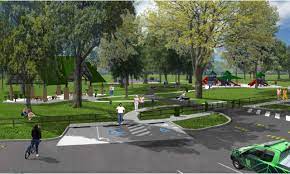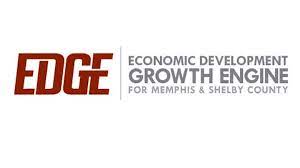Memphis has entered into what is arguably an era of great public parks but sadly, it appears Audubon Park isn’t going to be part of it.
So far, Shelby Farms Park has been transformed into a $70 million urban park.
Tom Lee Park is undergoing a $60 million transformation as centerpiece of five riverfront districts with 250 acres.
Overton Park’s aspirations will soon be captured in a comprehensive plan to be submitted to the public for feedback.
Meanwhile, Audubon Park is treated more as a staging ground for big-ticket City of Memphis tennis and golf projects while the place’s main purpose – as a free public park – receives perfunctory attention.
Regional Parks Are Different
There is the $40 million Leftwich Tennis Center under construction near Southern Avenue at South Goodlett Street and now City of Memphis has announced an $8 million upgrade to the golf course.
At the same time, only $2.8 million will be spent on what is left in the park that is free, and the plans for it are, in two words, unimaginative and uninspiring.
That’s because Audubon Park, as a regional park, is being treated as if it’s a neighborhood park. While neighborhood parks are the backbone of the Memphis park system, they generally follow a regular template and visitors primarily live nearby.
Regional parks are different. They serve a dual purpose. They offer recreational opportunities for the neighborhoods around them, but they are also a draw for people from the entire region. To do the latter as a regional park, it needs to be a magnet, and to be that, it needs a distinctive personality with high-quality features and options.
For example, Shelby Farms Park is the park of choice for neighborhoods around it but it also draws people from all over the region to enjoy the special facilities there. The transformed Tom Lee Park will be the neighborhood park for downtown and the four high-poverty zip codes surrounding downtown but it will also attract people from the entire region.
Sister Park To Overton Park
City officials announced Audubon Park would be improved for public use. That said, the plans indicate they care much more about tennis and golf than families coming there for unique and memorable park experiences that they cannot get in dozens of neighborhood parks in Memphis.
The plans for Audubon Park’s playground feel perfunctory and way too familiar and the additional trails and lighting are modest improvements to a park deserving something better, something that creates emotional attachments for families that visit it just like the other regional parks.
Think Overton Park. It too is a site for major public amenities – zoo, open-air amphitheater, art museum, golf, and zoo. However, despite all of these major tenants, Overton Park Conservancy has never forgotten that it’s first and foremost a park and that whatever its future holds, it is to be found in elevating and amplifying that core purpose.
In 1947, Edward Crump, political boss and officeholder when it suited him, wanted a park outside Memphis that would complement Overton Park. He convinced City of Memphis to buy the old Goodwyn House and 186.5 acres of land for $205,000. Shelby County Government bought the adjacent 169 acres from the Snowden estate for $195,000. The Goodwyn house was torn down and a golf course and lake were developed on the site.
Opposition Emerges
Besides not living up to its designation as a regional park, there is also something fundamentally different about Audubon Park. It is not managed by a conservancy. Shelby Farms Park, Overton Park, and the riverfront parks are, and the conservancies are laser-focused on the future of their respective parks and how they can deliver their maximum impact as welcoming places for Memphis in its full diversity.
Instead, Audubon Park is one of more than 150 parks that are the responsibility of City of Memphis parks division. It’s a demanding job for parks officials managing that many parks and setting priorities for the $40.3 million budget.
Mayor Jim Strickland and Memphis City Council deserve credit for the $75 million for parks improvements included in the Accelerate Memphis plan. However, rather than simply considering how to improve Audubon Park incrementally, the park deserves a dramatic, new vision for what it can be and how it can deserve being called a regional park.
After all, of its 353 acres, the park function gets a small part of the total. The golf course at Audubon Park consumes a large park of the acreage. On Google maps, the location of Audubon Park is even listed this way: Located in the Links at Audubon.
For park users, this is unfortunately an accurate description of Audubon Park. It is known more for its tenants than its relatively small green space with plans calling for the sacrifice of even more land for an expanded golf course and a new driving range.
It was this fact that led to the Saving Audubon Park grassroot group opposing the plan, because it leaves little of the park that can be enjoyed without paying for a ticket or a fee – like golf, tennis, Botanic Garden, and Live at the Garden which consumes acres of parkland for parking.
Don’t Waste The Opportunity
Opposition followed the City of Memphis groundbreaking ceremony with many neighborhood residents left out of the planning process and complaining about a lack of transparency.
To their credit, city administration officials admit their serious mistake in not asking for more public input, but in a volatile meeting last week with the public to make up for that oversight, a park official said he was open to other ideas but discouraged any expectations that they would be major.
City officials have said Audubon Park is a regional park. Because that is so, it is time for it to be treated like one and for the space set aside as free parkland to be improved from a new plan that creates the dramatic and distinctive park facilities it deserves.
While considering changes suggested by the neighborhoods, officials should take a new and more ambitious look at plans for the free parkland. It would be a wasted opportunity if Audubon Park is not a star in this emerging era of great parks.
**
Join us at the Smart City Memphis Facebook page for additional postings.





Thank you for such an excellent article. Your recommendataions are of the highest quality! Friends of Audubon Park has been asking for many of those changes for the last few years! Such as a playgound that fits into the natural setting. And of course, the lack of public input on any actions they are taking. I don’t think it’s enough just to say I’m sorry. Mr. Walker knew full well that there would be opposition to his plan, and kept it under wraps. And as you’ve said, this is a regional park, and has the potential to be a magnet as a nature center, natural area.
Thanks for this article, and I do hope municipal leaders will take it to heart. Having been part of the excellent but challenging early grassroots-driven work with Shelby Farms Park that ultimately led to the creation of the Conservancy and protection and development of the park, I know the engagement and alignment of all stakeholders (residents, user groups, eco-activists, public entities, private entities) is not fast or easy but, in the end, is well worth the effort. There are plenty of comments both positive and negative I could make about recent plans and developments, but the core problem I see is that little meaningful transparency and active engagement of the community to get to a broader, more comprehensive plan has occurred that I can support whether or not I like the choices. I reiterate your view that Audubon Park deserves a thoughtful strategic & comprehensive approach rather than a tactical, limited one. The early and ongoing champions of SFP (including municipal and county government staff and elected officials) have shown this can be done, and that social and even economic good can be born out of such a process and can draw in private dollars to leverage city and county resources. I daresay the current plans and approach will not interest many besides U of M boosters. Let’s think bigger, Memphis & Shelby Co; thanks for your honestly about “mistakes being made;” now is the moment to go beyond apology and make amends by pausing your plans and reset the process. P.S. And as a concerned and caring citizen who doesn’t like to just complain, I would be willing to invest time in such a venture, and I am certain there are more like me from all sorts of stakeholder groups who would be more willing to offer their time, talent and treasure to such an effort.
Thanks, Susanna, for that important context. And Stephanie, the Shelby Farms Park work was crucial to its success and public support (and someone should take you up on your offer to invest your time and incredible knowledge to a better process).
Thank you all for your insightful comments. With some creative thinking, Audubon Park could be turned into an asset for all residents. The current development plan is short-sighted, taking down mature trees and greenspace and substituting water hungry and chemically treated fairways, greens, and driving range to be used by a narrow segment of Memphians. A question I have is since there are no useable ponds within miles of Audubon Park, could the lake there be made into a recreational attraction?
Thank you for your thoughtful article. We have been working to preserve the east side of Audubon Park for the children, families, walkers and people who want to sit and enjoy nature. Walking at Audubon Park and sitting by the lake saved my sanity during the Covid lock down as it did for many others.